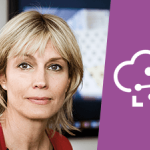
IoT Architecture Design and Business Planning
Ready to migrate your IoT projects to a production environment? Need to evaluate your solution architecture and business docs before committing resources? This course provides the expert guidance and hands-on experience that you need.
Gallery
Description
Is your business preparing to roll out an IoT solution to a production environment? Do you need to evaluate your solution architecture or submit final business docs before committing valuable resources? Have you completed a thorough evaluation of the security risks that your business might be facing? This course provides the expert guidance and hands-on experience that you need in order to prepare for a successful IoT solution roll-out.
The first module provides an overview of the IoT Reference Architecture, introducing Things, Insights and Actions. With a basic understanding of the architecture, students will examine the core and optional subsystems, cross-cutting concerns, principles and concepts of the Reference Architecture, and architecture of key subsystems
In the second module, students will use the Remote Monitoring Solution Accelerator to explore the receipt and processing of remote device telemetry (the most common scenario for IoT) within the context of the Reference Architecture. Students will identify the areas of alignment and where the solution departs from the reference, as well as the tools used to deploy the solution. The student will then review some of the options for customizing the Remote Monitoring solution and complete some customization activities. Finally, the student will review additional accelerator solutions and learn when they may be applicable.
In module three, students are introduced to approaches that can be used to determine and document the business and system requirements that will drive key factors such as security, scalability, availability, and disaster recovery service level agreements. They will then apply the requirements, develop a candidate architecture, build a PoC, deliver a cost analysis, and evaluate against quality measures. To finish up the module, students will propose the IoT Hub Operations, Monitoring and Security Processes and Procedures to support the candidate architecture.
In the final module, students will take their defined business requirements and examine how to apply their understanding of IoT Architecture and the capabilities of Azure IoT to create a compelling proposal. They will learn the key attributes of the Azure Cloud and the Azure IoT architecture that should be emphasized, approaches for developing the cost of a proposal and other factors such as support. Students will also consider the steps necessary for moving from a Proof of Concept to a full rollout and how to support the solution.
The first module provides an overview of the IoT Reference Architecture, introducing Things, Insights and Actions. With a basic understanding of the architecture, students will examine the core and optional subsystems, cross-cutting concerns, principles and concepts of the Reference Architecture, and architecture of key subsystems
In the second module, students will use the Remote Monitoring Solution Accelerator to explore the receipt and processing of remote device telemetry (the most common scenario for IoT) within the context of the Reference Architecture. Students will identify the areas of alignment and where the solution departs from the reference, as well as the tools used to deploy the solution. The student will then review some of the options for customizing the Remote Monitoring solution and complete some customization activities. Finally, the student will review additional accelerator solutions and learn when they may be applicable.
In module three, students are introduced to approaches that can be used to determine and document the business and system requirements that will drive key factors such as security, scalability, availability, and disaster recovery service level agreements. They will then apply the requirements, develop a candidate architecture, build a PoC, deliver a cost analysis, and evaluate against quality measures. To finish up the module, students will propose the IoT Hub Operations, Monitoring and Security Processes and Procedures to support the candidate architecture.
In the final module, students will take their defined business requirements and examine how to apply their understanding of IoT Architecture and the capabilities of Azure IoT to create a compelling proposal. They will learn the key attributes of the Azure Cloud and the Azure IoT architecture that should be emphasized, approaches for developing the cost of a proposal and other factors such as support. Students will also consider the steps necessary for moving from a Proof of Concept to a full rollout and how to support the solution.
Pricing:
Free
Free
Level:
Intermediate
Intermediate
Duration:
4 weeks, 4h-6h/week
4 weeks, 4h-6h/week
Educator:
Chris Howd
Chris Howd
Organization:
Microsoft
Microsoft
Submitted by:
Coursearena
Coursearena
Reviews
Would you recomment this course to a friend?
Discussion
There are no comments yet. Please sign in to start the discussion.






